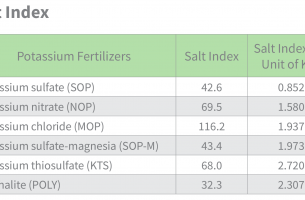Nutrient Removal and Replenishment
All growers know that the nutrients plants consume must be replaced to ensure ongoing crop health, quality and productivity. But do you know how much your plants are consuming, and what you need to do to replenish the soil bank that your plants withdraw from?
Crop type, soil and weather all impact nutrient removal and determine fertility replenishment. Accurate nutrient removal estimates give growers an idea of how well or how poorly they are compensating for the nutrients their plants are removing from the soil.
The biggest issue for specialty crops is that nutrient removal rates have not been as widely investigated as other major crops. This concern was addressed in a recent field study in Texas: “Although nutrient removal measurements for many field crops are available, such values for fruit and vegetable crops are rare. Knowledge of nutrient removal amounts is critical in developing fertilizer management practices to sustain yields, quality and to maintain soil fertility.”1
The study’s goal was to “characterize nutrient removal amounts by major vegetable crops grown on calcareous soils in south Texas, in order to develop fertilizer recommendations for quality improvement.” But growers in other regions with similar or different crops are not out of luck. By working with a crop advisor and conducting soil and tissue sampling, growers can get a good idea of what their plants are removing from the soil.
By getting a better idea of the levels of nutrients their plants are removing from the soil, growers can more effectively and cost efficiently develop a fertilization strategy to ensure the productivity of their crops.
The chart below uses the information from the USDA results to show how crops are removing levels of K, and how to replenish those levels.

Footnotes:
1 Nutrient Removal by Major Vegetable Crops Grown on Calcareous Soils in Texas. Jifon, L. John, 2010.




